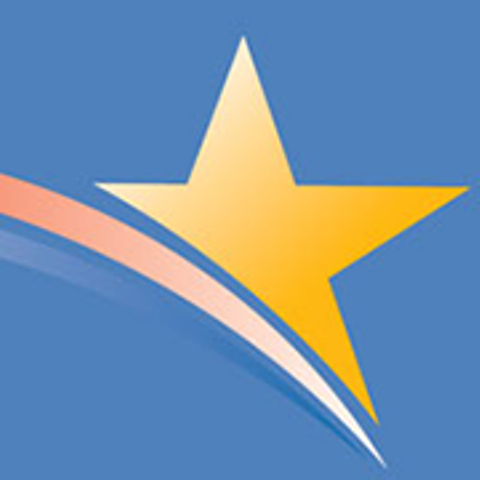 The Health Information Technology for Economic and Clinical Health (HITECH) Act provided providers with a significant financial incentive to increase the adoption and use of EHRs. EHR vendors were required to conduct and report on a summative usability evaluation of their system as part of the Stage 2 Meaningful Use program (The ONC 2014 Edition Certification). However, a recent report funded by the Agency for Healthcare Research and Quality (AHRQ), identified several “issues” with the certified EHR vendors in the processes, practices and use of standards and best practices with regard to usability and human factors.
The Health Information Technology for Economic and Clinical Health (HITECH) Act provided providers with a significant financial incentive to increase the adoption and use of EHRs. EHR vendors were required to conduct and report on a summative usability evaluation of their system as part of the Stage 2 Meaningful Use program (The ONC 2014 Edition Certification). However, a recent report funded by the Agency for Healthcare Research and Quality (AHRQ), identified several “issues” with the certified EHR vendors in the processes, practices and use of standards and best practices with regard to usability and human factors.
patient portals
See the following -
5 unique EHR contract stipulations
It's well established that vendor electronic health record and related contracts heavily favor the vendor to the detriment of the provider. Many of them limit the vendor's liability, require that the EHR software be taken "as-is," prohibit class-action lawsuits or require arbitration. "They all limit their liabilities ... and [allow] the vendor much legal leeway," Carl Bergman, a consultant who serves as managing partner of EHRselector.com, a free service that enables providers to compare different ambulatory EHR products, tells FierceEMR.
- Login to post comments
7 Cool Little Open Source Projects That Stood Out in 2016
 In the early days of the open source movement, a lot of the attention was on operating systems, and later on large content management systems. These days, containers are mentioned regularly even in mainstream news outlets. The big tech stories are great, but they miss the other great activity in the niches of the open source space. I've rounded up seven interesting lesser-known projects from the past year. You can see more articles about projects like this in my Nooks and Crannies column...
In the early days of the open source movement, a lot of the attention was on operating systems, and later on large content management systems. These days, containers are mentioned regularly even in mainstream news outlets. The big tech stories are great, but they miss the other great activity in the niches of the open source space. I've rounded up seven interesting lesser-known projects from the past year. You can see more articles about projects like this in my Nooks and Crannies column...
- Login to post comments
AMIA’s Doug Fridsma: Time for the Feds to Truly Open Up Patient Records to Fully Interoperable Data Use
 Access to information and the ability to integrate and use information has changed how individuals book travel, find information about prices and products, and compare and review services. Information can empower individuals, but health care has lagged behind other fields. It is unconscionable that in 2016 most patients are unable to obtain their entire medical record unless they print it out. While progress has been made in the last several years to support patients’ access to their information through various electronic means, such as Blue Button and patient portals, this is not sufficient to make patients first-order participants in their care, their health and their research efforts...
Access to information and the ability to integrate and use information has changed how individuals book travel, find information about prices and products, and compare and review services. Information can empower individuals, but health care has lagged behind other fields. It is unconscionable that in 2016 most patients are unable to obtain their entire medical record unless they print it out. While progress has been made in the last several years to support patients’ access to their information through various electronic means, such as Blue Button and patient portals, this is not sufficient to make patients first-order participants in their care, their health and their research efforts...
- Login to post comments
Apple Is Quietly Working on Turning Your iPhone into the One-Stop Shop for All Your Medical Info
Imagine turning to your iPhone for all your health and medical information — every doctor's visit, lab test result, prescription and other health information, all available in a snapshot on your phone and shared with your doctor on command. No more logging into hospital websites or having to call your previous doctor to get them to forward all that information to your new one. Apple is working on making that scenario a reality...
- Login to post comments
Are Your Medical Records Open To Theft?
A major criticism of EMRs is the companies that make them have financial incentives to keep them from being easily shared...
- Login to post comments
Cybersecurity Check In
No one likes to think about the possibility that patients might be hurt or killed as a result of cyber attacks. But all signs indicate that this is a real possibility and a serious problem. Attacks on Health IT systems such as EHRs or patient portals, electronic medical devices, or on standard healthcare digital systems can be a threat to patient safety...
- Login to post comments
Docs Favor Paper Over Portals, Study Shows
Patient portals will become a big part of the requirements doctors must fulfill for Stage 2 meaningful use in the HER incentive program. And that means, doctors have a long way to go to get there, because the vast majority still like communicating the old-fashioned way. Read More »
- Login to post comments
EdLogics Addresses Health Literacy Gap with Linux Container and Cloud Solutions from Red Hat
 Red Hat, Inc., the world's leading provider of open source solutions, today announced that EdLogics, a health education-based consumer engagement company and innovator in game-based learning, has built its digital health literacy platform on container and cloud solutions from Red Hat, including Red Hat OpenShift Container Platform, Red Hat JBoss Middleware, and Ansible by Red Hat. EdLogics’ Education-as-a-Service offering, based on Red Hat technology, is aiming to transform the way consumers learn about health and improve health literacy while simultaneously cutting consumer costs...
Red Hat, Inc., the world's leading provider of open source solutions, today announced that EdLogics, a health education-based consumer engagement company and innovator in game-based learning, has built its digital health literacy platform on container and cloud solutions from Red Hat, including Red Hat OpenShift Container Platform, Red Hat JBoss Middleware, and Ansible by Red Hat. EdLogics’ Education-as-a-Service offering, based on Red Hat technology, is aiming to transform the way consumers learn about health and improve health literacy while simultaneously cutting consumer costs...
- Login to post comments
EHR Usability Gaps -- ONC and AHRQ Identify Serious Shortcomings of Certified EHRs
- Login to post comments
Halamka Summarizes the CMS Meaningful Use Final Rule
 I’ve been asked to summarize the 752 page CMS Meaningful Use Final Rule...Between the Notice of Proposed Rulemaking and the publication of the CMS Final Rule, the Medicare Access and CHIP Reauthorization Act of 2015 (MACRA) passed to include sunsetting the Meaningful Use payment adjustment for professionals at the end of 2018. Also, MACRA requires the establishment of a Merit-Based Incentive Payment System (MIPS) which would incorporate Meaningful Use. The comment period will be used in an attempt to align the Meaningful Use program and the MIPS program...Stage 3 is more controversial and I will focus on that.
I’ve been asked to summarize the 752 page CMS Meaningful Use Final Rule...Between the Notice of Proposed Rulemaking and the publication of the CMS Final Rule, the Medicare Access and CHIP Reauthorization Act of 2015 (MACRA) passed to include sunsetting the Meaningful Use payment adjustment for professionals at the end of 2018. Also, MACRA requires the establishment of a Merit-Based Incentive Payment System (MIPS) which would incorporate Meaningful Use. The comment period will be used in an attempt to align the Meaningful Use program and the MIPS program...Stage 3 is more controversial and I will focus on that.
- Login to post comments
Harvard Docs: Time Is Right for Patient-Centered Health Repositories, Not Portals
 A number of public and private initiatives have been launched over the years in the name of a personal health record for patients. But one way or another, they've all failed to gain traction, according to Drs. Isaac Kohane and Kenneth Mandl of the Harvard-affiliated Boston Children's Hospital, who published an editorial in the New England Journal of Medicine last week. The authors believe now might be the time to finally realize that ambition...
A number of public and private initiatives have been launched over the years in the name of a personal health record for patients. But one way or another, they've all failed to gain traction, according to Drs. Isaac Kohane and Kenneth Mandl of the Harvard-affiliated Boston Children's Hospital, who published an editorial in the New England Journal of Medicine last week. The authors believe now might be the time to finally realize that ambition...
- Login to post comments
Health Datapalooza 2017 – The Data Revolution Rolls On
 The 8th annual Health Datapalooza returns on April 26 – 28 and offers a re-imagined vision of health and health care through the lens of data. In years past, Health Datapalooza has set its sights on health-care startups, apps, big data, electronic health records – you name it – but the main thrust was always more about the business of health care and how tech and data are used to innovate. The annual conference for data geeks, developers, health tech venture capitalists, and start-up wannabes, among others, will this year triangulate around the idea that the patient should be at the center of health care.
The 8th annual Health Datapalooza returns on April 26 – 28 and offers a re-imagined vision of health and health care through the lens of data. In years past, Health Datapalooza has set its sights on health-care startups, apps, big data, electronic health records – you name it – but the main thrust was always more about the business of health care and how tech and data are used to innovate. The annual conference for data geeks, developers, health tech venture capitalists, and start-up wannabes, among others, will this year triangulate around the idea that the patient should be at the center of health care.
- Login to post comments
How Does the ONC Define HIE, Value-Based Care, Population Health?
 The new ONC Health IT Playbook contains a wealth of resources and information for healthcare organizations in various stages of reform. From the very beginning stages of negotiating an EHR purchase to the complex integration of multiple care sites into a risk-based financial arrangement, there’s something for everyone at every level in this interactive, online compendium of knowledge...
The new ONC Health IT Playbook contains a wealth of resources and information for healthcare organizations in various stages of reform. From the very beginning stages of negotiating an EHR purchase to the complex integration of multiple care sites into a risk-based financial arrangement, there’s something for everyone at every level in this interactive, online compendium of knowledge...
- Login to post comments
Logging On For Life
Digital access to medical records empowers patients through better communication, smarter decisions, and continuous health tracking online. Read More »
- Login to post comments
Noted: Experimenting With Open Access Notes In Medicine
As health information technology continues to evolve, new and creative uses for electronic health records (EHRs) are beginning to develop. One such “potentially disruptive innovation” is the use of EHRs and patient portals to give patients access to the notes doctors prepare on patients after an office visit. Read More »
- Login to post comments